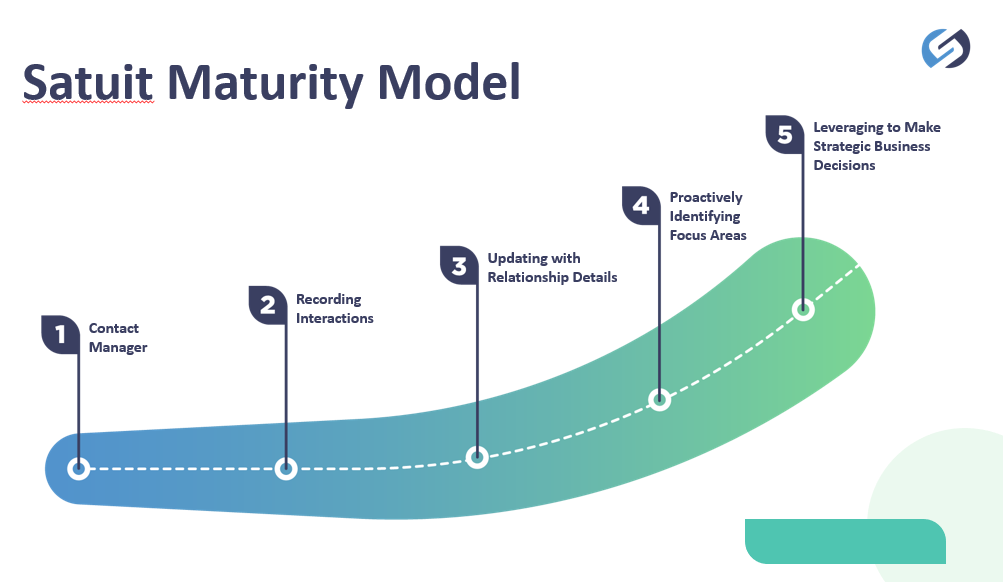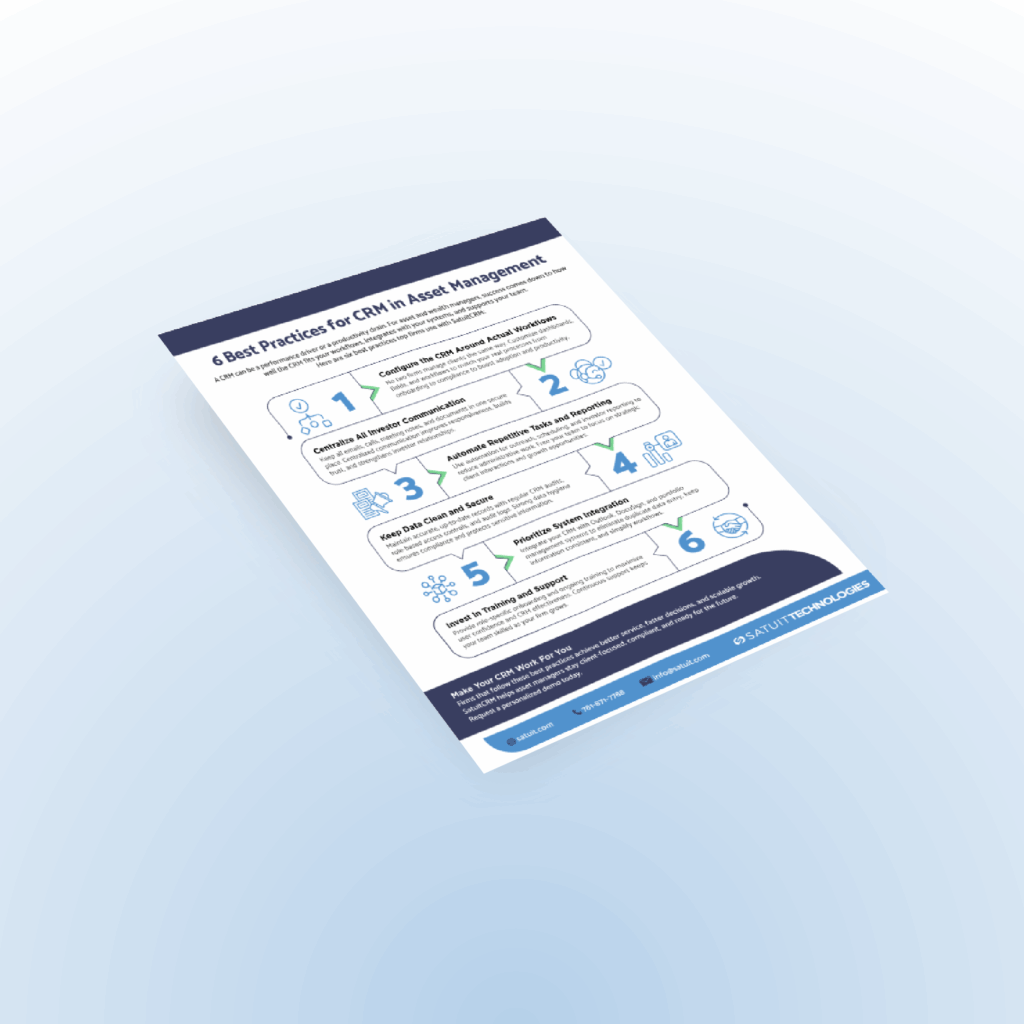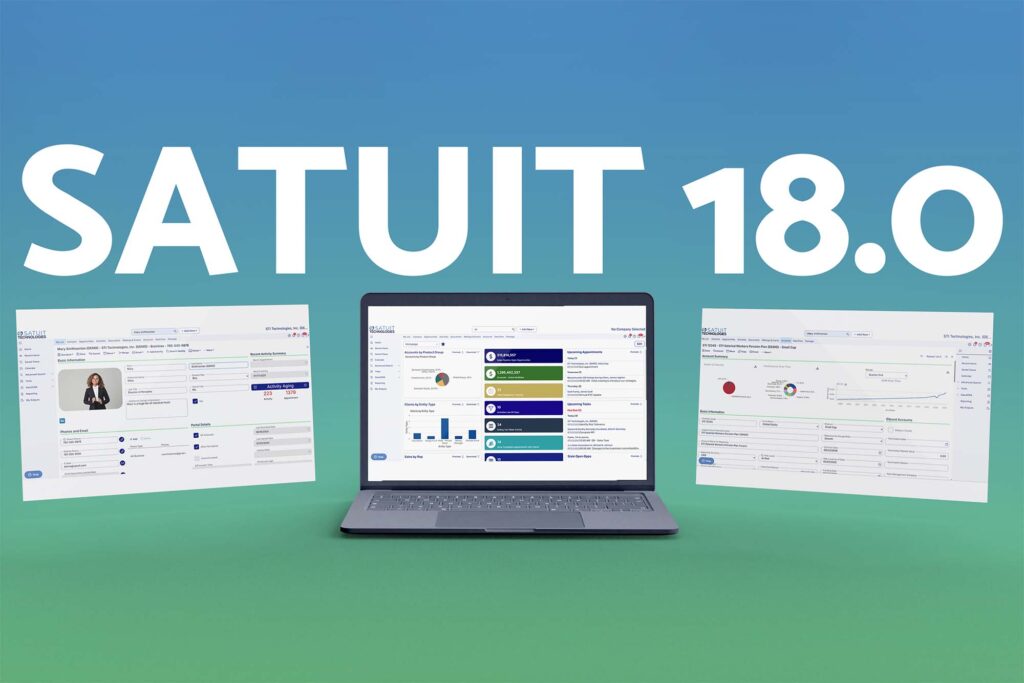Your CRM fuels your firm’s ability to cultivate, manage, and enhance relationships.. With a propensity for customer-centricity, data-driven decision-making, and agile adaptation to market dynamics, a mature CRM culture is increasingly becoming an imperative for the investor relations and asset management sectors.
Unveiling the layers of CRM maturity can be the catalyst that propels your business from reactive to proactive, from operational to exceptional. Today, we’re discussing what CRM maturity entails and how elevating its maturity can unravel opportunities for client engagement and business growth.
What is a CRM Maturity Model?
The CRM Maturity Model gives context to how firms leverage and foster a CRM culture, integrating the CRM mindset within each role and functional team of a firm. The model tracks the levels and steps needed from adopting a digital “rolodex” to driving strategic initiatives and course corrections.
General Manager of Satuit Technologies, Jamie Plassmann, describes the CRM maturity model in this way:
The goal of any CRM implementation is to drive consistent AUM growth through a culture of proactive, systematic, and repeatable behaviors. Satuit’s CRM Maturity Model helps to identify a firm’s current state, clarify the desired future state, and outlines the steps required to progress and navigate towards that goal.
The Stages of an Investor CRM’s Maturity Model
Level 1 – Build
A CRM’s maturity model begins with developing simple profiles and persona models, including primary data like name, contact information, financial profiles such as risk appetite and account details, and personal interests. All data is centralized in a single electronic record accessible by all teams, with comprehensive audit logs to track changes.
Level 2 – Capture
This level concentrates on institutionalizing relationship knowledge, gathering detailed activity histories, ensuring and proving compliance, and spotting basic historical trends. It aims to protect relationship continuity, prevent effort duplication or damage, and ensure smooth transitions through staffing changes, thereby maintaining consistent customer experiences.
Level 3 – Expand
Here, the focus is on expanding the capture and analysis of the relationship ecosystem, including creating profiles and personas for third-party SMEs. It seeks to institutionalize activities across investors and funds, ensuring continuity and avoiding duplication or damage to efforts. This level also facilitates smooth staffing transitions between both entities, strengthening third-party relationships.
Level 4 – Learn
At this stage, analyzing opportunities and risks within the relationship ecosystem becomes pivotal. It involves quantifying relationship values, identifying areas for immediate action or caution, and employing strategic selling tactics based on forecasting product interest. Additionally, it emphasizes visualizing key operational KPIs and tracking and managing staff performance to enhance overall strategy execution.
Level 5 – Optimize
Strategic decision-making is key at this stage, with an emphasis on evaluating the balance between effort and reward and observing their effects on assets under management, engagement, and performance metrics. The level prioritizes operational enhancements through automation and the streamlining of team workflows, removing reliance on decentralized communication methods. It also aims to standardize processes and behaviors for maximum operational efficiency.
How to Increase Your CRM’s Maturity Level
To elevate your CRM’s maturity, all stakeholders need to grasp the overarching CRM strategy and its pivotal role in achieving business success. This strategy should be aligned with your organization’s goals and objectives, enabling the CRM to drive meaningful outcomes.
When asked to suggest ways of increasing CRM maturity, Plassmann tells us:
While leveraging the functionality of your CRM is critical, equality important to your firm’s success is establishing a culture of CRM. When a firm configures the CRM to truly help its employees do their job, and their employees understand the specific value of their contributions to CRM hygiene, then an organization can make huge strides to the next level.
Contact Satuit to Begin Realizing Your Investor CRM’s Full Potential
For buy-side firms, a mature CRM culture means deeper insights, stronger relationships, and more strategic decision-making capabilities. By focusing on advancing your CRM’s maturity, you gain the potential to drive significant competitive advantage and AUM growth. Let Satuit guide you through each stage of the process, ensuring your CRM strategy aligns perfectly with your business objectives for unparalleled growth and client satisfaction. Contact our team today.





